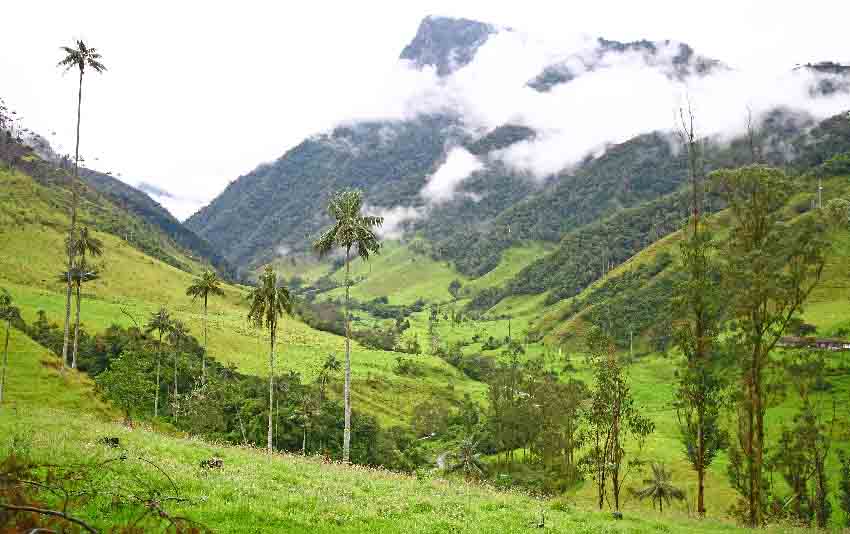ProColombia is an entity under the Colombian Ministry of Trade, Commerce, and Tourism that internationally promotes investment, exports, tourism, and the country brand. Through its national and international network of offices, it offers support and integral consultancy to clients through services or instruments aimed at facilitating design and execution of its globalization strategy, which seeks to generate, develop and close business opportunities.
Interview with Carmen Caballero Villa, President of ProColombia.
Easy Engineering: What are the main areas of activity of the organization?
Carmen Caballero Villa: The promotion of exports of non-mining energy goods and services in markets with potential, the expansion of Colombian companies, the attraction of foreign direct investment to Colombia, the positioning of the country as a tourist destination for vacations and meetings and Colombia Country Brand, are the main axes on which PROCOLOMBIA focuses its work.
ProColombia promotes international negotiations through:
- Identification of market opportunities.
- Design of market penetration strategies.
- Company globalization.
- Action plan design coaching.
- Contact among entrepreneurs through commercial promotion, investment and international tourism activities.
- Specialized services to foreign entrepreneurs interested in acquiring Colombian goods and services or who wish to invest in Colombia.
- Alliances with national and international private and public entities that allow expanding the availability of resources to support different business initiatives and promoting development and growth of the service portfolio.
E.E: What’s the news for 2023 about new directions? What can you tell us about market trends?
C.C.V: Colombia is one of the largest economies in the region with a positive growth outlook. Foreign direct investment to Colombia increased from US$ 7,6 million in 2021 to US$ 17 million in 2022 The United States and Spain led capital flows to the country. Foreign direct investment (FDI) to Colombia grew up to 81.7% in 2022, going from US$7,6 million to US$17 million, according to the Central Bank of Colombia. This figure resulted from capital contributions made by non-resident investors in the country, who continue to bet on several critical sectors of the economy. Financial and business services, transportation and communications, manufacturing, commerce and hotels, and electricity, among others, were the largest recipients of foreign investment.

“Foreign investment will be a determining factor in favor of Colombia’s reindustrialization, as well as in the development of projects such as fair energy transition, sustainable tourism, and agri-food security because it is a driving force in the creation of new jobs, technology transfer and contributes to a better quality of life in the country’s regions,” said Carmen Caballero, president of ProColombia.
The Central Bank also confirmed that 45.6% of the total income received this way was due to capital participation, 38.4% to reinvestment of profits, and 16.0% to debts between companies with direct investment relations.
Another data the Issuer reveals is that Colombia registered foreign credits for US$13 million, that is, US$3,5 million more than last year. On the private sector side, US$9,3 million in debt was acquired, mainly by banking and non-banking financial services companies. The public sector reported loans of US$3.7 billion.
As part of ProColombia’s contribution to attracting foreign investment, the agency facilitated the arrival of 201 new projects, whose start-up and development are estimated to take place over the next three years and could generate more than 84,900 jobs, according to foreign investors.

The tourism industry is already showing growth figures after the pandemic, thanks to a strategy led by ProColombia focused on attracting foreign tourists and promoting high-spending market niches. This facilitates a tourism that protects the environment and promotes the development of communities in the regions. With an estimated figure, and according to the Ministry of Trade, Commerce and Tourism of Colombia, last year the country registered the arrival of more than 4,5 million foreign travellers. The countries that registered the most arrivals were mainly the United States, Ecuador, Mexico, Peru and Chile. And the most visited destinations were Bogotá, Medellín, Cartagena, Cali and Barranquilla.
Regarding the spending of these travelers, the Central Bank of Colombia indicated that in 2022 US$ 7,368.1 million were recorded for passengers and trips, the highest amount obtained in foreign currency, increasing by 127.5% compared to 2021 and compared to the previous levels of the pandemic, a growth of 2.8% was observed compared to 2019.
These figures have been driven by the strategy led by the Ministry of Trade, Commerce, and Tourism, executed by ProColombia, focused on promoting the attraction of tourists from high-spending niches and the positioning of destinations with an offer associated with sustainability, peace and that show the country as a “world power of life”.
Visiting Colombia is like traveling to six countries in one, since travelers can visit the six different tourism regions the country has to offer: Greater Colombian Caribbean, Colombian Eastern Andes, Colombian Western Andes, Colombian Massif, Colombian Pacific, and Amazon – Orinoquía. The country has launched worldwide the tourist stamp “Colombia: Destinations of Peace”, which highlights the work of the actors who build peace, promotes an inclusive local and regional economy and fosters scenarios of opportunities for productive inclusion in the tourism sector.

E.E: What estimations do you have for 2023?
C.C.V: In 2023 we work with the leadership of the Ministry of Commerce, Industry and Tourism of Colombia to position the country as a provider of non-mining goods and services, strengthening the export of more MSMEs, regions and products, and trade with Latin America; tourism in harmony with life that contributes to social and economic justice in the regions; and attract more foreign investment that contributes to the sustainable development of Colombia.

